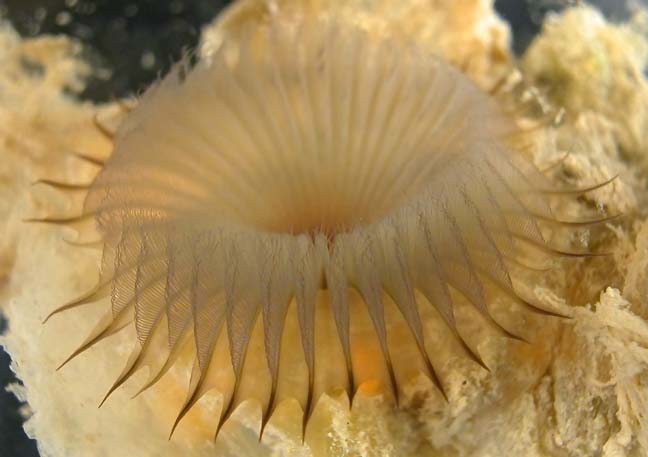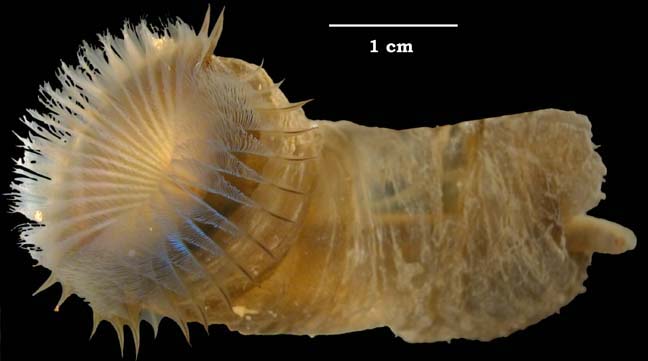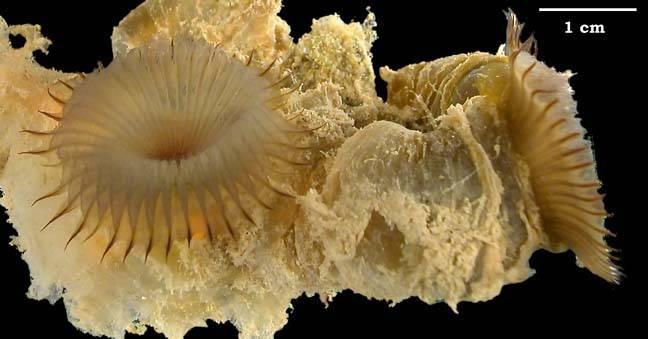California Academy of Sciences
Home What is a Settling Plate? Settling Plate Organisms Participating Schools Get Involved!
Myxicola infundibulum (Renier, 1804) - Non Native
This sabellid polychaete worm inhabits San Francisco Bay harbors and muddy bottoms, secreting a transparent gelatinous tube of mucus in which it lives. On harbor floats, these tubes are wedged between tunicates, mussels, and other fouling organisms. Offshore in benthic communities, the mucous tubes are vertically embedded in soft mud. Often, our mud grab collects only sections of the soft tubes with no animal inside. This initially puzzled our biologists as they tried to identify the sources of the tubes.
Myxicola (which translates as "slime dweller") has a plume of radioles which are nearly completely connected down their lengths by a clear membrane that together with the radioles forms a "funnel". This funnel is thought to prevent fine sediment clouds from reaching the interior branchial crown where they could clog the worm's filter feeding organs.
This sedentary polychaete has a very large axon within its nerve cord, which allows for a quick reaction time when the worm withdraws into its tube after disturbance by a predator or other threat. When this happens, the worm's body can reduce itself by half its length, which explains why our mud grab may surface with only the upper section of its slimy tube. It is also likely that outer layers of the tube are shed from time to time, yielding cast-off sections that are collected without any trace of the former inhabitant.
The Myxicola infundibulum population of the Bay is cryptogenic, meaning of unknown origin. It is thought to have been introduced from the Mediterranean.





